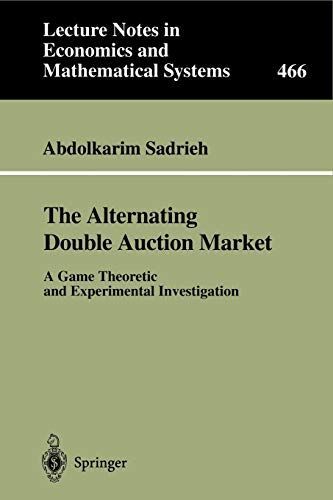
The Alternating Double Auction Market A Game Theoretic and Experimental Investigation
The alternating double auction market institution is presented as a discrete time version of the open outcry market. The game in extensive form is analyzed in an almost perfect information setting, using the concept of subgame perfectness. By applying two new equilibrium selection criteria, a general existence result is obtained for "impatience equilibria" of the game. All such equilibria are shown to have unique properties concerning the traded quantities and prices. The most important results are that the equilibrium prices are independent of the number of traders and are always very close to - if not inside - the range of competitive prices. The latter can be evaluated as game theoretic support for the convergence of prices to the competitive price. The process of price formation is traced by applying the learning direction theory and introducing the "anchor price hypothesis".